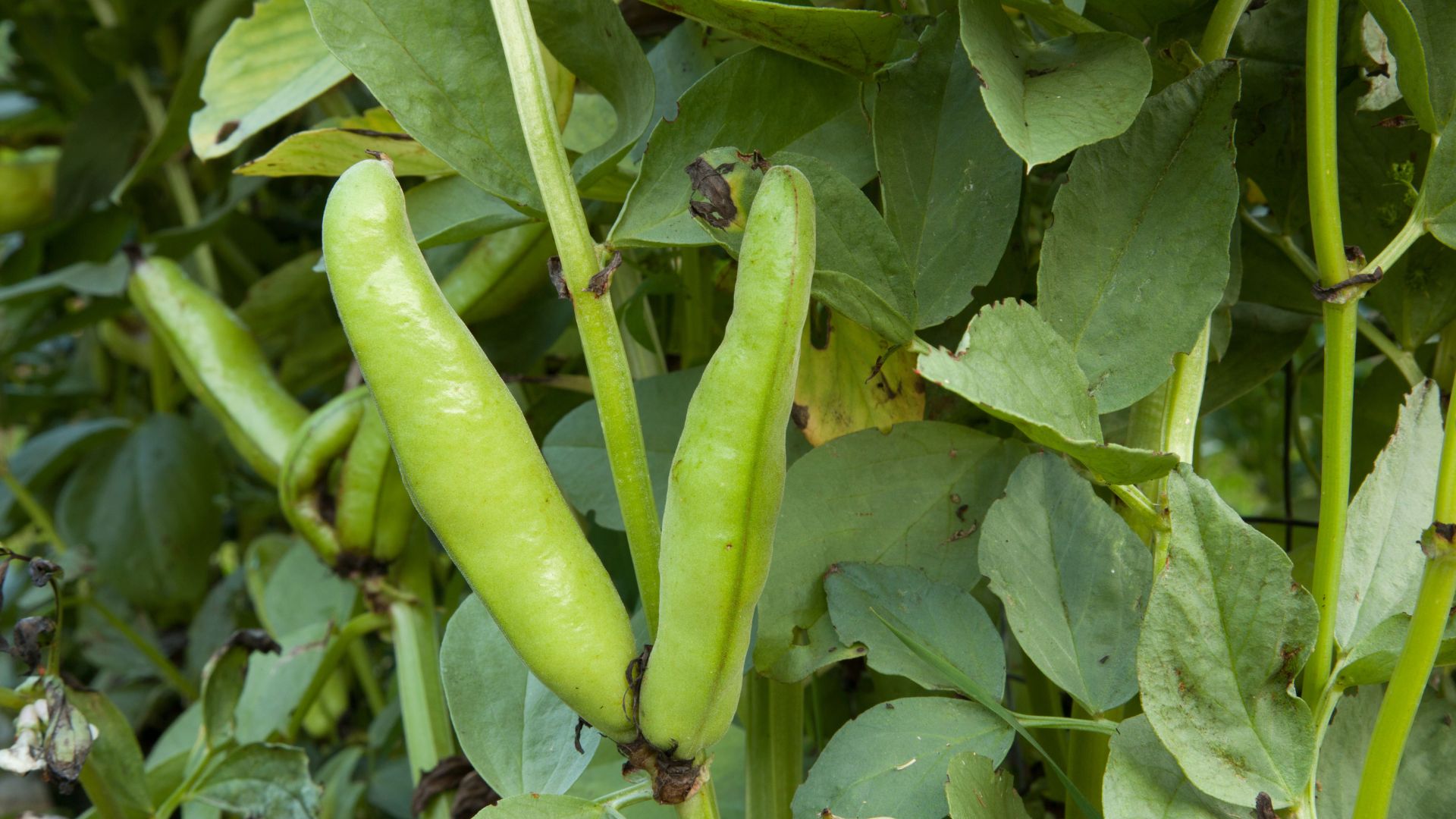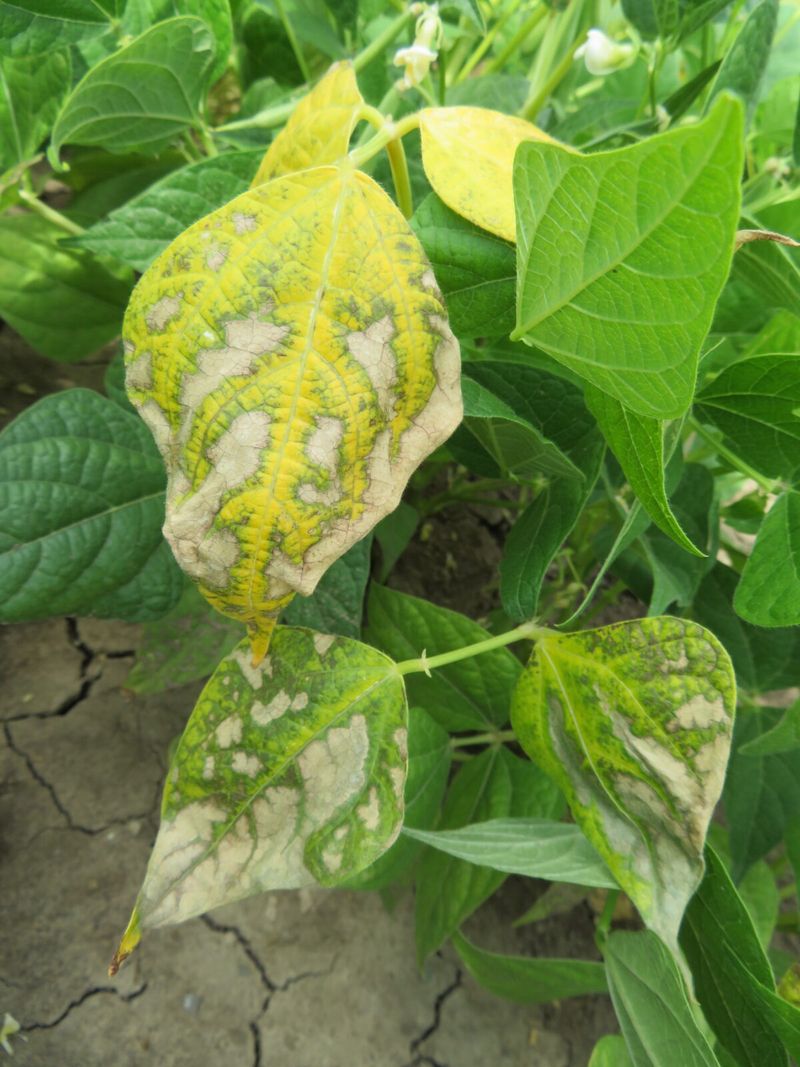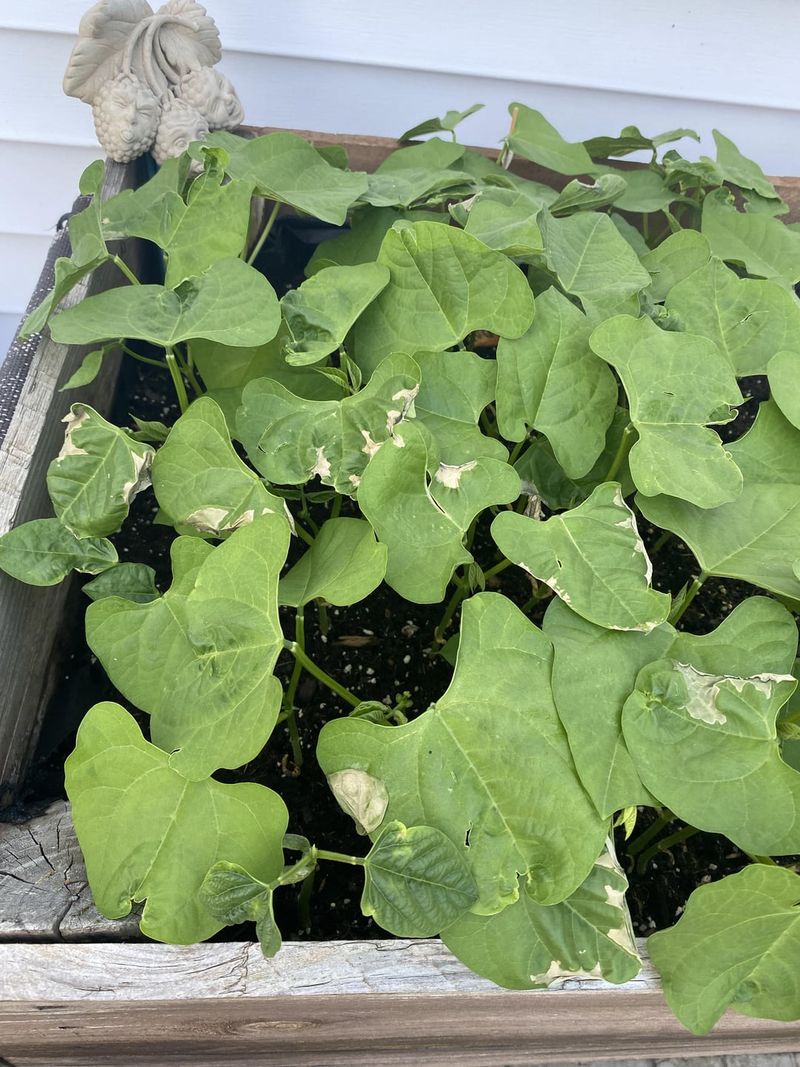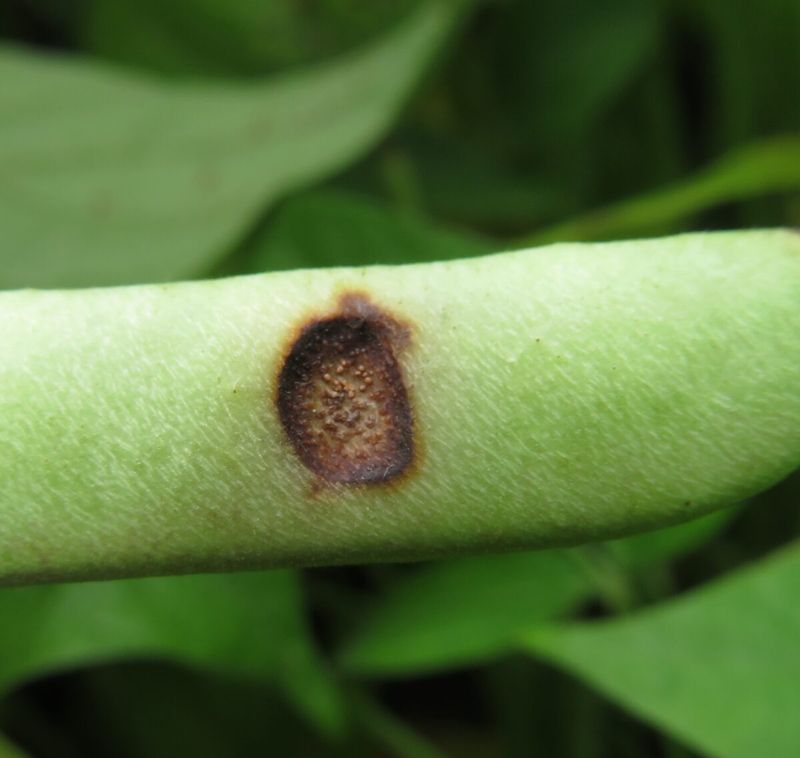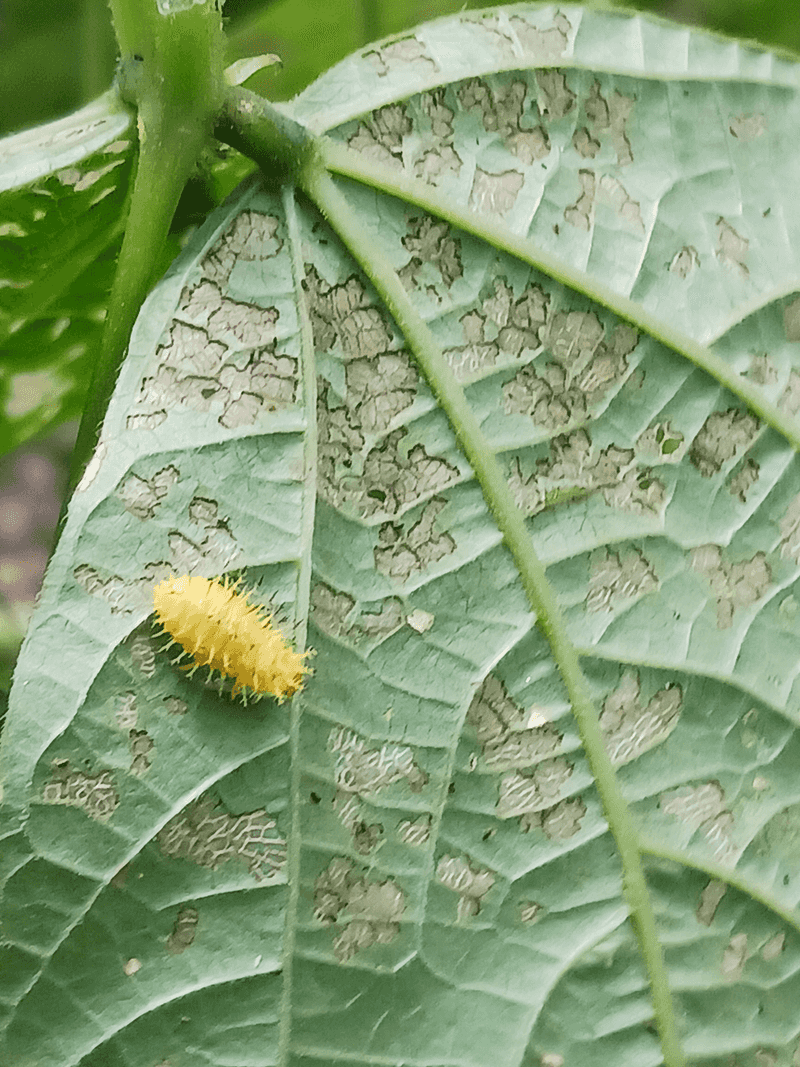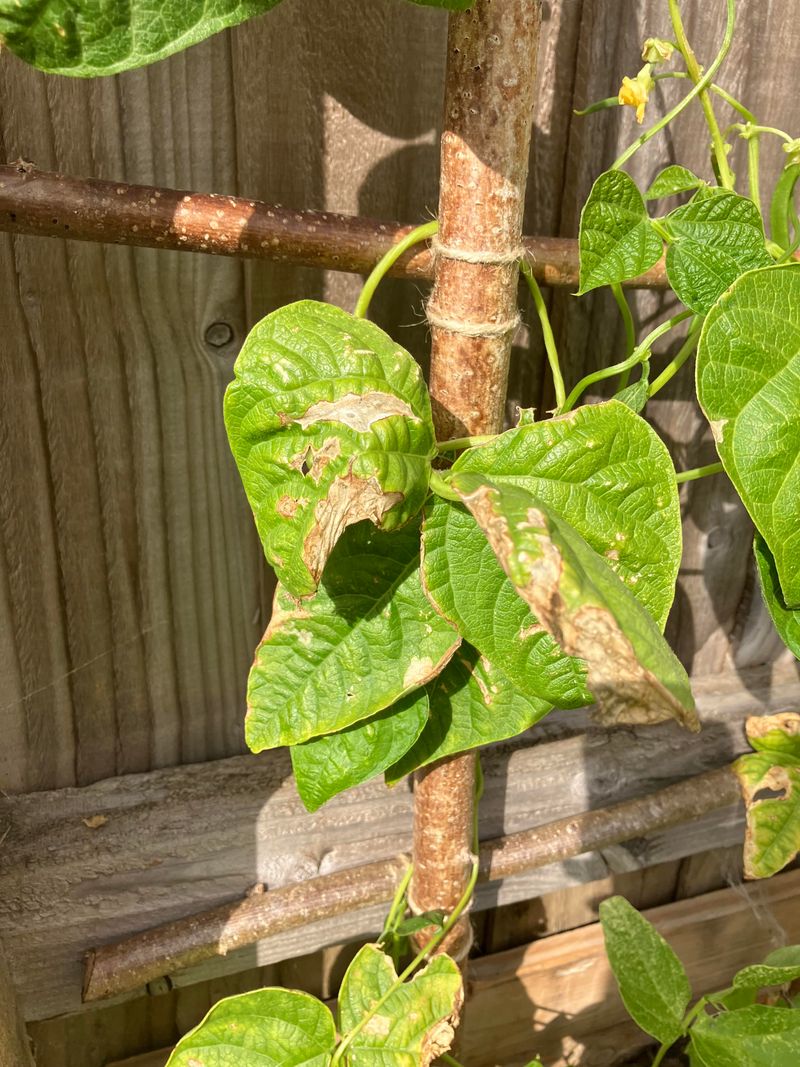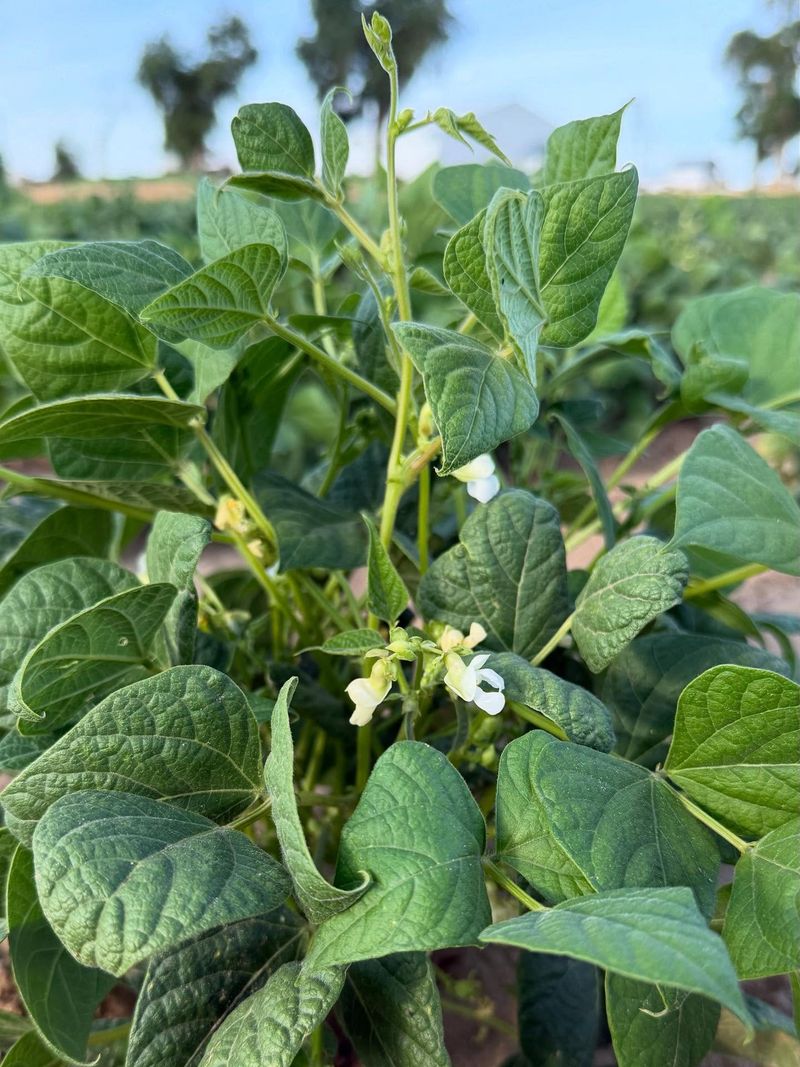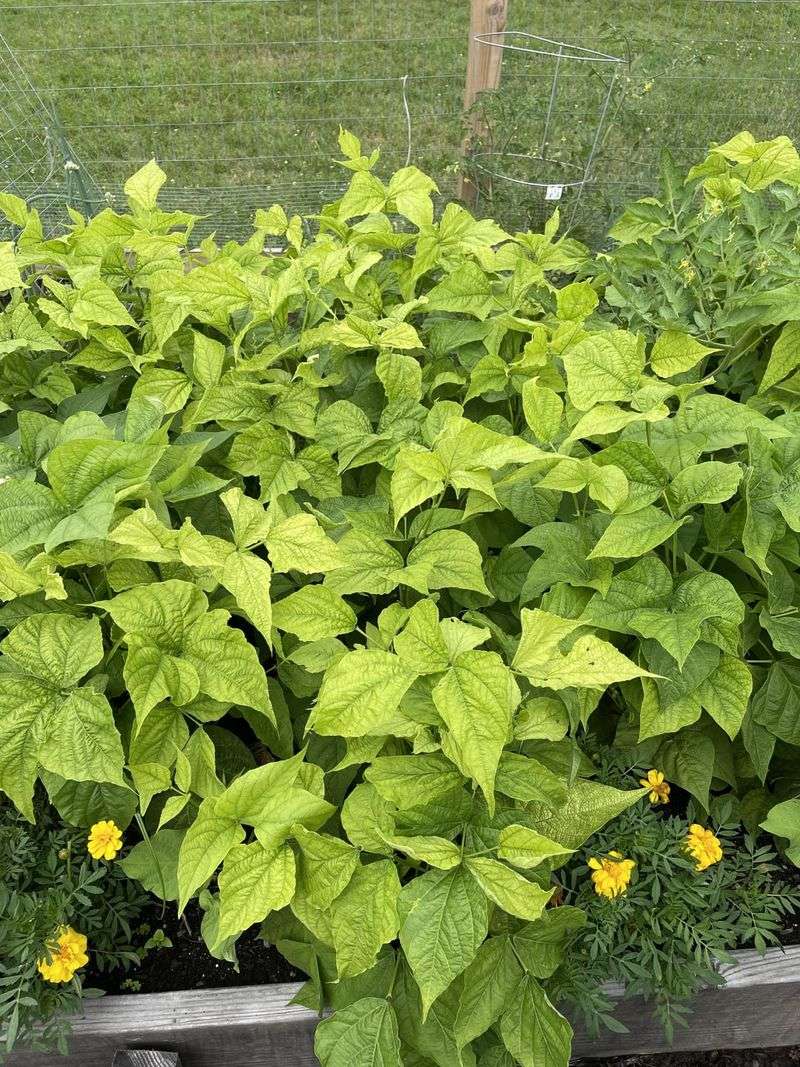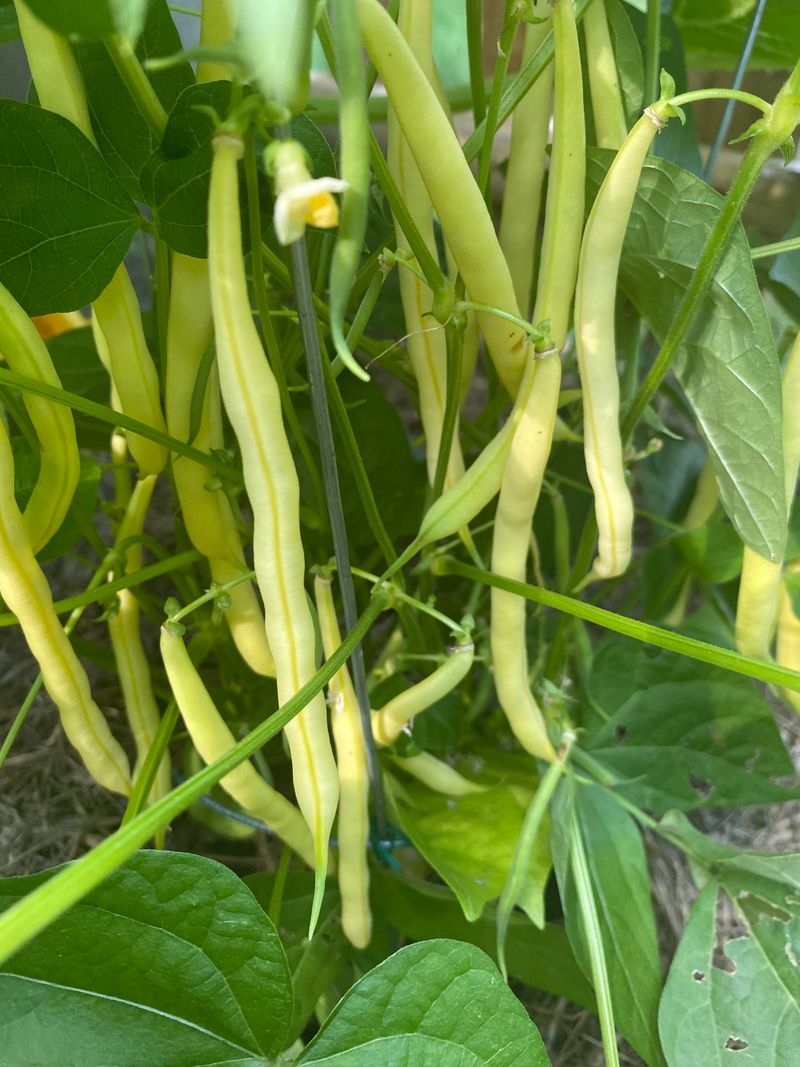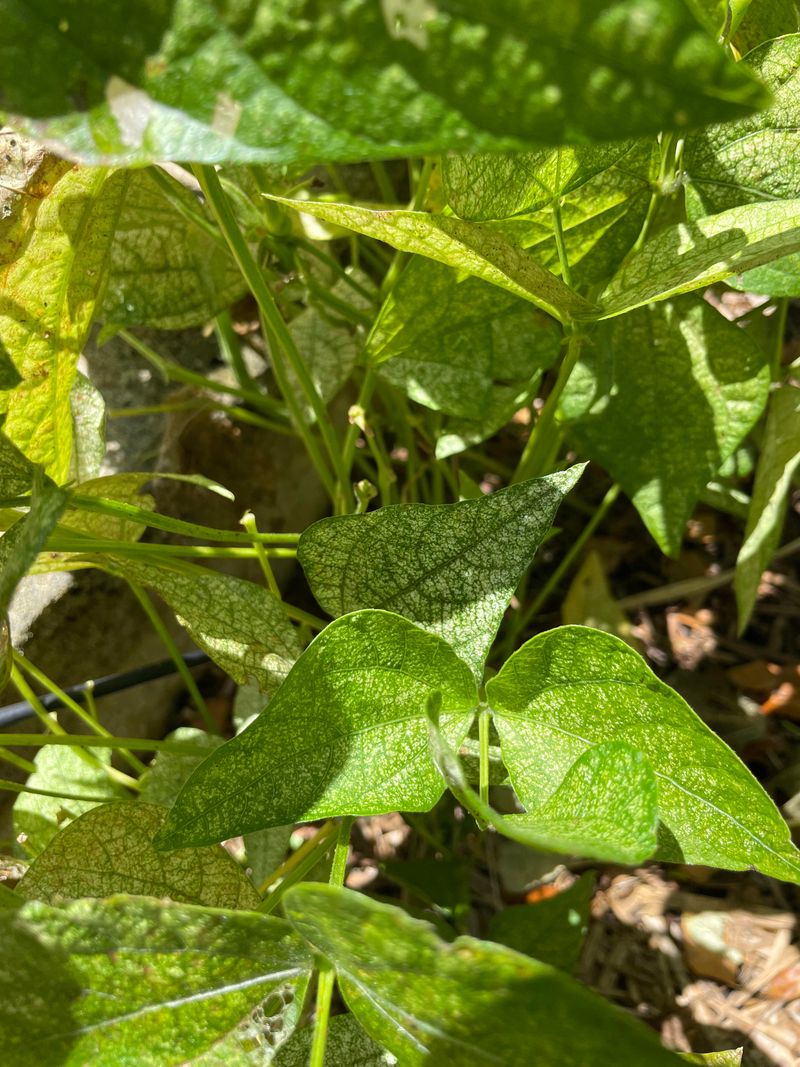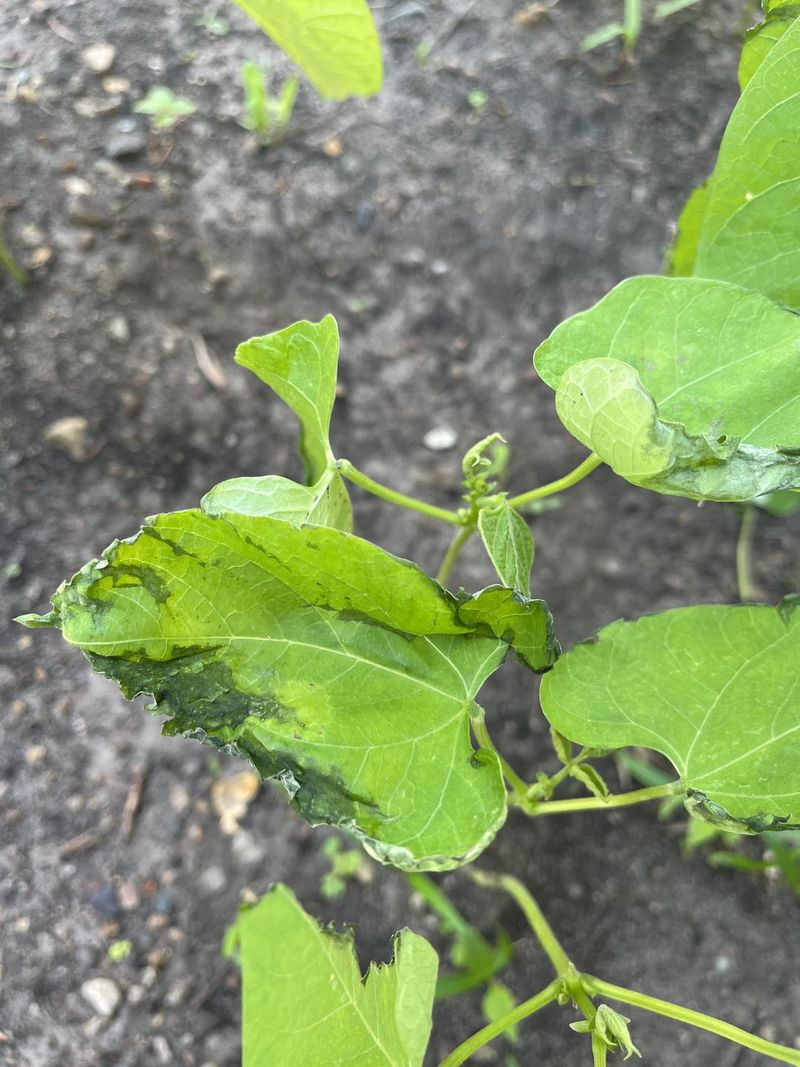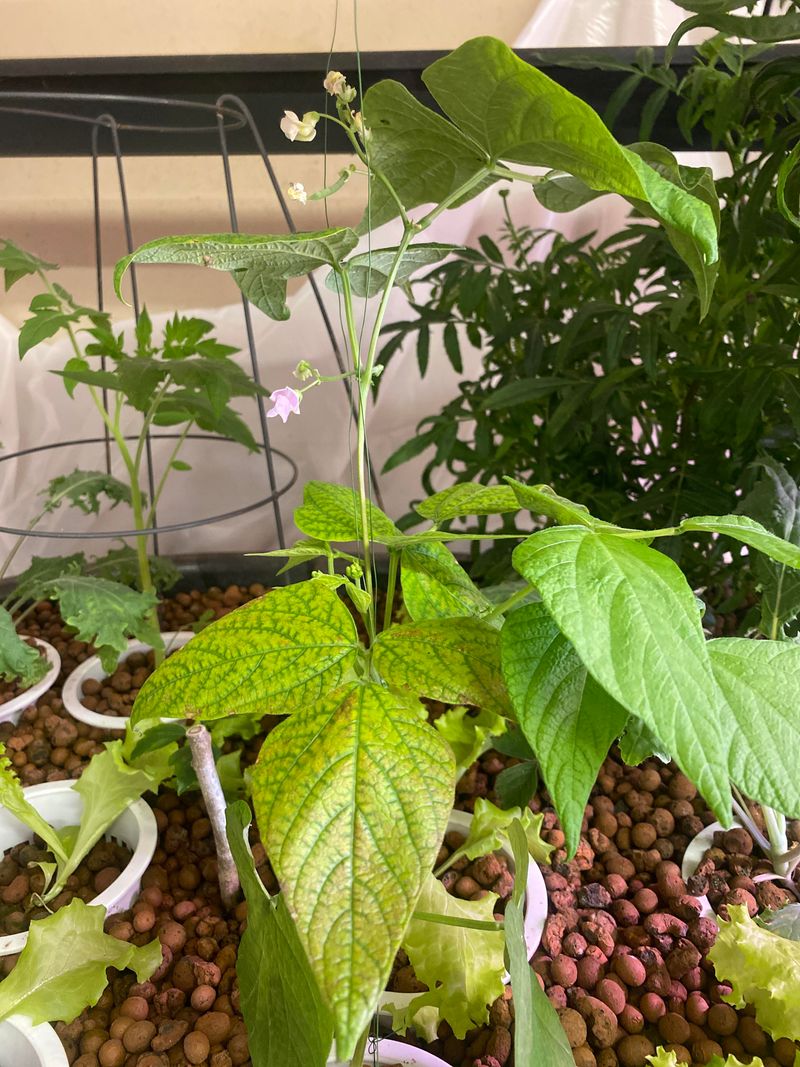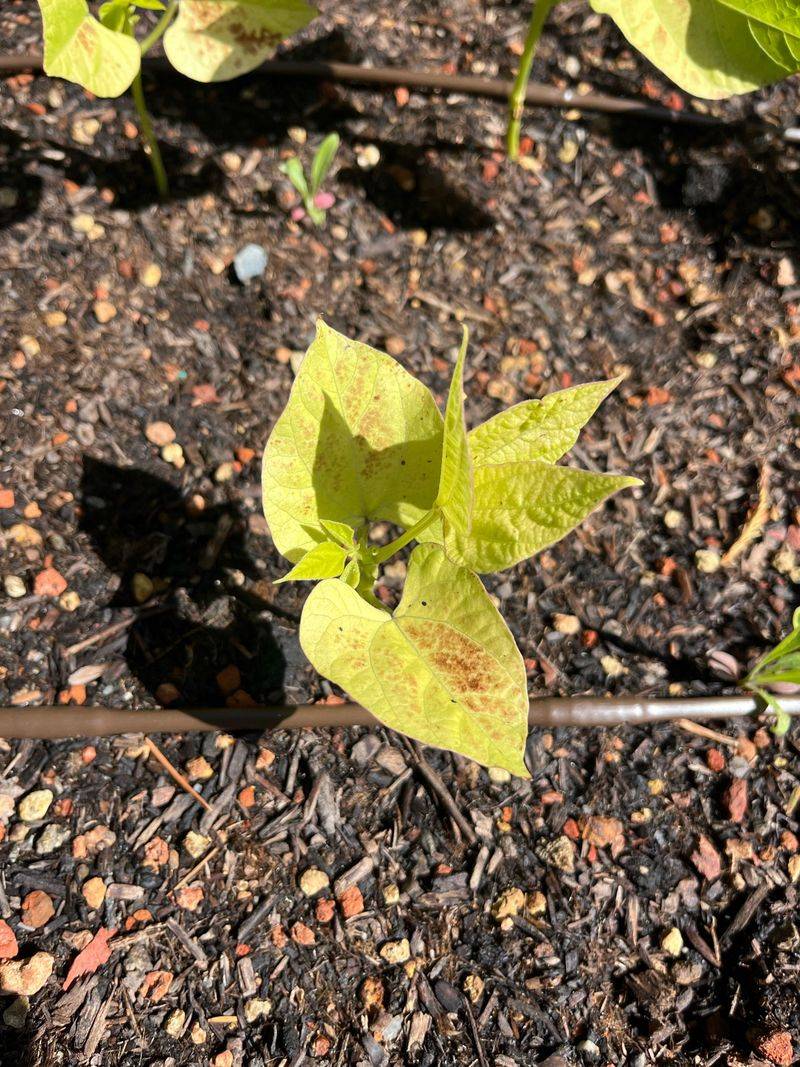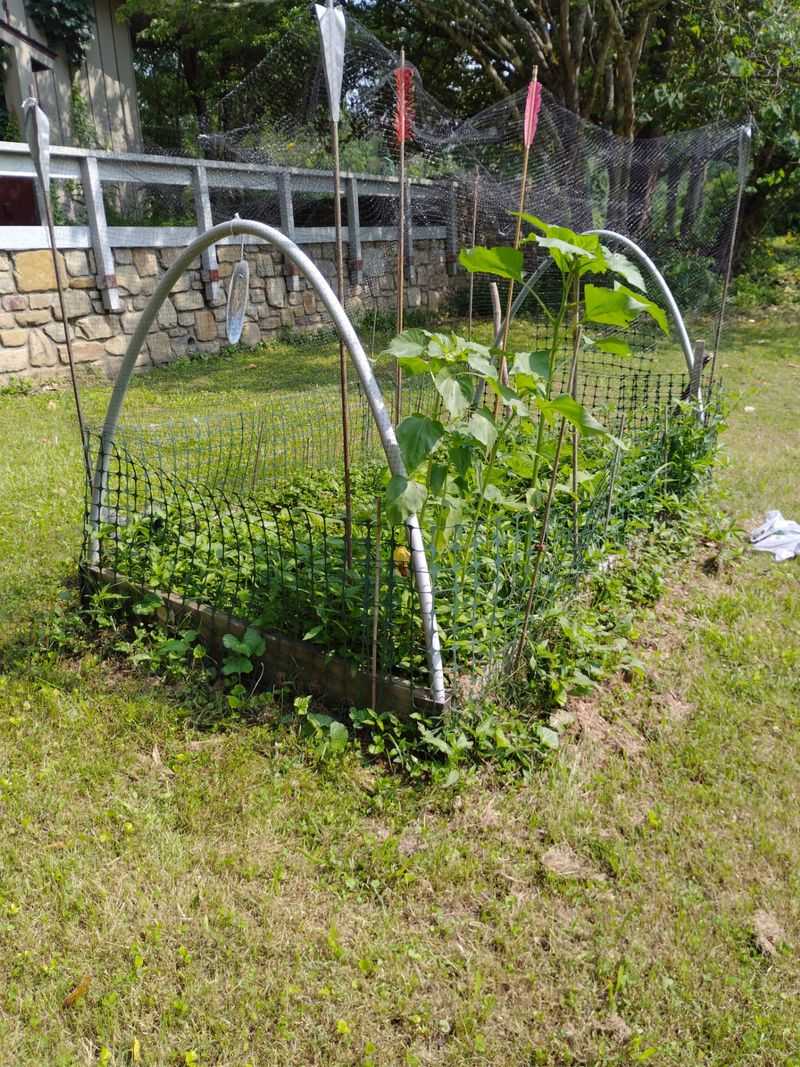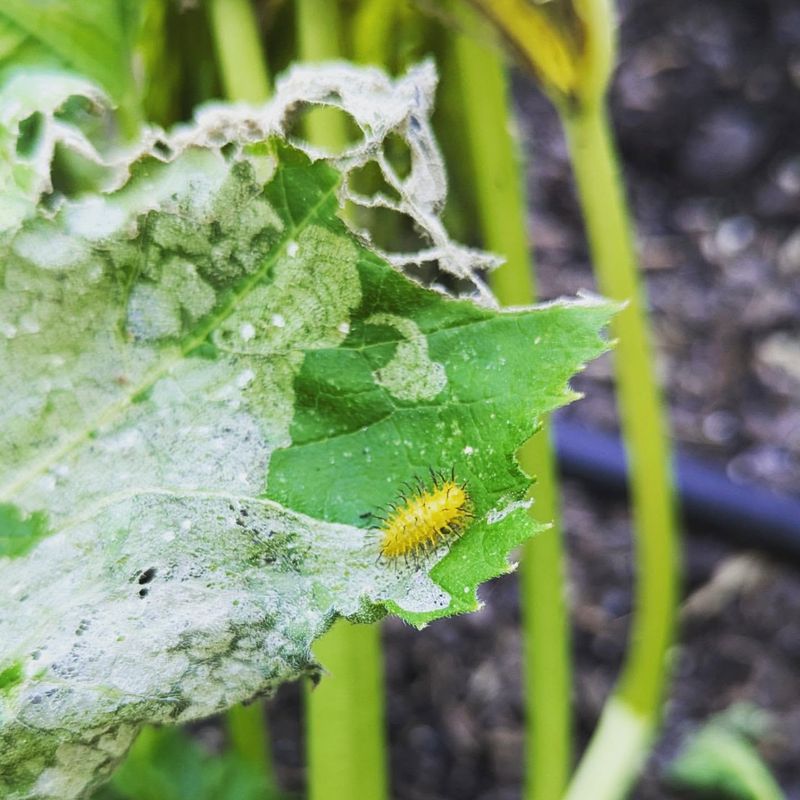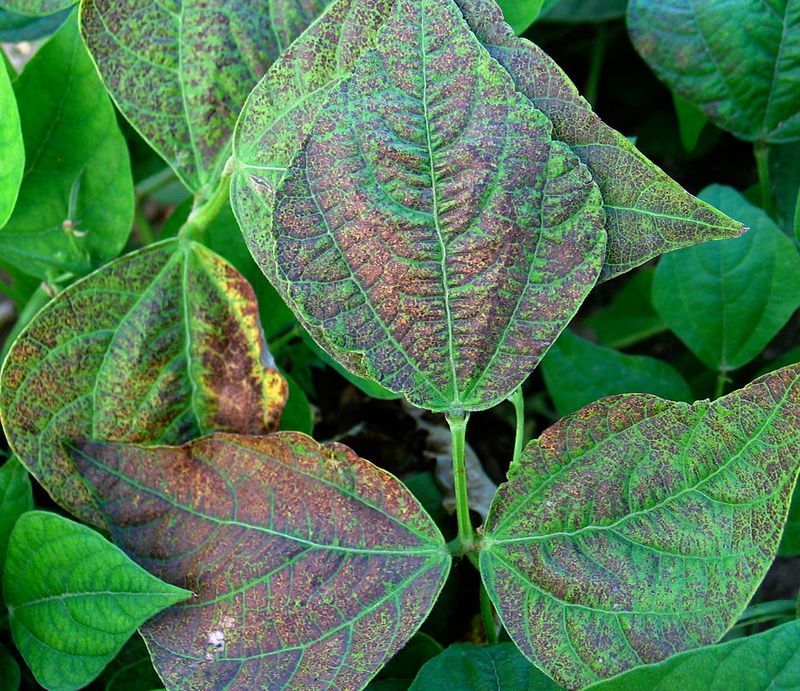Colorado gardeners are noticing something strange on their bean plants this month – mysterious brown spots appearing seemingly overnight. The high elevation and recent weather swings we’ve experienced have created perfect conditions for various bean problems to develop.
I’ve been fielding calls from frustrated gardeners across the Front Range, all describing similar symptoms but often caused by different culprits. From fungal invaders thriving in our afternoon thunderstorms to insect pests making the most of our dry spells, there’s no shortage of potential troublemakers.
Understanding what’s causing those brown spots is the first step to saving your harvest. Here are sixteen reasons your beans might be showing these concerning symptoms in Colorado gardens right now.
1. Bean Rust Fungus Attack
The rusty-colored spots spreading across your bean leaves are likely bean rust fungus. This common disease thrives in Colorado’s recent humid conditions, especially when temperatures swing between hot days and cool nights.
The spores easily spread through water splash from our afternoon thunderstorms. Look for small orange-brown pustules that release powdery spores when touched.
Remove infected leaves immediately and avoid overhead watering to prevent further spread.
2. Bacterial Blight Invasion
Water-soaked spots that turn brown with yellow halos point to bacterial blight. Many Colorado gardens are seeing this issue after our recent hailstorms damaged plant tissue, creating entry points for bacteria.
The bacteria spread rapidly during warm, wet weather. You’ll notice lesions on leaves, stems, and pods that look greasy at first.
Unfortunately, infected plants can’t be cured and should be removed to protect your other beans.
3. Sunscald From Intense UV Exposure
Colorado’s thin atmosphere at higher elevations allows more intense UV radiation to reach your garden. The resulting sunscald appears as bleached spots that eventually turn brown, typically on the most exposed leaves and pods.
I’ve noticed this happens most often after a cloudy period when plants haven’t hardened off to sudden intense sunshine. The damage looks similar to disease but affects only sun-exposed areas.
Consider adding partial shade cloth during the hottest part of the day.
4. Anthracnose Fungal Disease
Dark, sunken lesions with reddish-brown borders are telltale signs of anthracnose. This fungal disease loves Colorado’s afternoon thunderstorms and warm days, spreading rapidly when leaves stay wet.
The spots often appear along leaf veins and can create holes as the tissue dies. Seed-borne anthracnose might have been dormant until conditions became favorable this month.
Rotate crops and avoid working in the garden when plants are wet to prevent spread.
5. Mexican Bean Beetle Feeding Damage
Those lacy, skeletonized leaves with brown spots might be the work of Mexican bean beetles. These copper-colored pests resemble ladybugs but cause significant damage, especially in Colorado’s Front Range gardens where they’ve become established.
Both adults and larvae feed on leaf undersides, leaving the upper surface intact until it browns and dies. The damage often appears suddenly as populations explode.
Hand-pick beetles early in the morning when they’re less active.
6. Drought Stress Symptoms
Colorado’s recent dry spell combined with our notorious drying winds can cause drought stress even in irrigated gardens. The resulting brown spots typically appear at leaf edges first, then move inward as the plant sacrifices older growth.
Our sandy soils drain quickly, making consistent moisture difficult to maintain. You might notice the spots worsen in afternoon heat when plants can’t take up water fast enough.
Apply mulch to retain soil moisture and consider drip irrigation for more efficient watering.
7. Hail Damage Recovery
Those random brown spots might actually be healing hail damage from last month’s storms. Colorado’s notorious summer hailstorms can puncture leaves, creating wounds that turn brown as they heal.
The damage pattern is usually irregular and affects multiple plants in the same way. Look for small tears or holes surrounded by brown, dead tissue.
The plants will likely recover with new growth if the stems weren’t severely damaged, but harvest might be delayed.
8. Alkaline Soil Nutrient Lockout
Many Colorado gardens have naturally alkaline soil, which can prevent beans from absorbing iron and manganese. The resulting nutrient deficiencies appear as yellowing between leaf veins that eventually turns brown, especially on newer growth.
Our irrigation water often contains dissolved minerals that make the problem worse over time. The spots typically start yellow then develop brown patches as cells die.
Adding organic matter and using acidifying fertilizers can help address this common Colorado garden challenge.
9. Herbicide Drift Damage
Brown spots with unusual patterns might be herbicide drift from nearby lawns or properties. Colorado’s windy conditions can carry herbicides surprising distances, especially during our afternoon gusts.
The damage often appears on one side of the plant or garden area. Look for cupped, distorted leaves with brown spots or edges, unlike typical disease patterns.
Talk with neighbors about coordinating spray times and create windbreaks to protect your garden from future drift.
10. Spider Mite Infestation
Tiny speckling that gradually turns brown could be spider mite damage. These microscopic pests thrive in Colorado’s hot, dry conditions and are especially problematic along the Front Range during July and August.
Check leaf undersides with a magnifying glass for tiny moving dots and fine webbing. The damage typically starts at the bottom of plants and moves upward as the infestation grows.
Regular strong sprays of water can dislodge mites before populations explode.
11. Cold Snap Injury
Colorado’s unpredictable mountain weather can bring sudden temperature drops, even in summer. Recent overnight lows in the 40s can damage bean tissue, causing brown spots that appear days later as the damaged cells die.
The injury often affects the most exposed parts of the plant first. Unlike disease, cold damage typically appears suddenly across multiple plant varieties after a chilly night.
Row covers provide valuable protection during our unpredictable temperature swings.
12. Magnesium Deficiency Signs
Yellowing between leaf veins that progresses to brown spots might indicate magnesium deficiency. This is common in Colorado’s leached mountain soils, especially after heavy rains wash away this mobile nutrient.
The symptoms typically appear on older leaves first, with younger growth looking normal. The pattern creates a distinctive marbled appearance before brown spots develop.
A foliar spray of Epsom salts (1 tablespoon per gallon) can provide quick relief while you address soil amendments.
13. Alternaria Leaf Spot Outbreak
Concentric ring patterns within brown spots point to Alternaria leaf spot. This fungal disease has been spreading in Colorado gardens after our recent pattern of warm days and cool, humid nights.
The spots often have a target-like appearance with distinct zones of color. Older leaves show symptoms first, with infection gradually moving upward.
Improve air circulation by thinning plants and avoid overhead watering to reduce humidity around leaves.
14. Early Frost Damage
Some higher elevation Colorado gardens have already experienced early morning frost, especially in mountain valleys where cold air settles. The resulting damage appears as water-soaked patches that turn brown within days.
Unlike disease, frost damage often affects the most exposed parts of plants and appears suddenly after a cold night. The tissue looks translucent before turning brown.
Watch weather forecasts carefully this month and have frost cloth ready for those unexpected cold snaps.
15. Soil Splash Fungal Contamination
Heavy Colorado thunderstorms can splash soil onto lower leaves, bringing fungal spores in contact with plant tissue. The resulting infections create brown spots that often have irregular shapes and are concentrated on lower portions of plants.
This is especially common in our clay soils that form a hard crust. The spots may have different appearances as multiple fungi can be introduced simultaneously.
Apply mulch around plants to prevent soil splash during our intense summer storms.
16. Ozone Damage From Urban Pollution
Front Range gardens are experiencing increased ozone levels this month, causing small brown spots and stippling on upper leaf surfaces. The damage resembles tiny bronze or brown freckles concentrated between leaf veins.
Urban gardens and those downwind from Denver see this most frequently during hot, still days. Unlike disease, ozone damage appears on many different plant species simultaneously.
Not much can be done except to choose resistant varieties in future plantings if you garden near urban areas.

